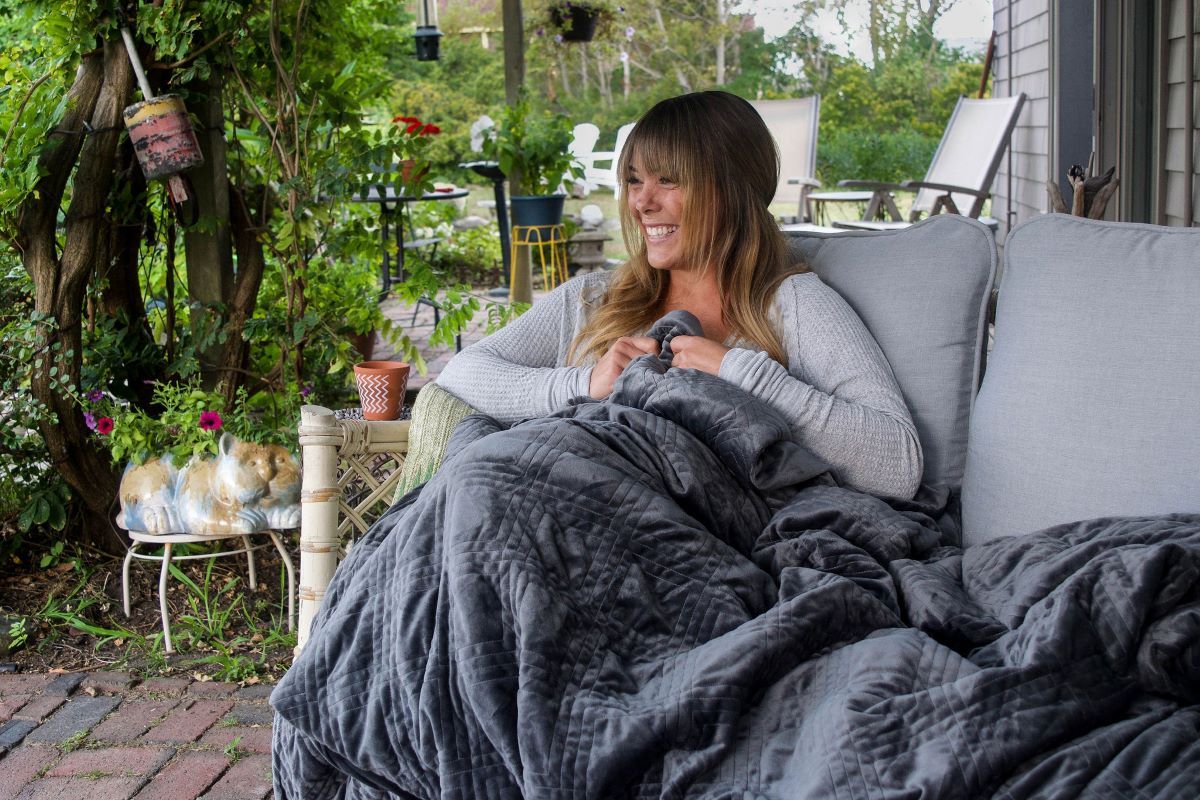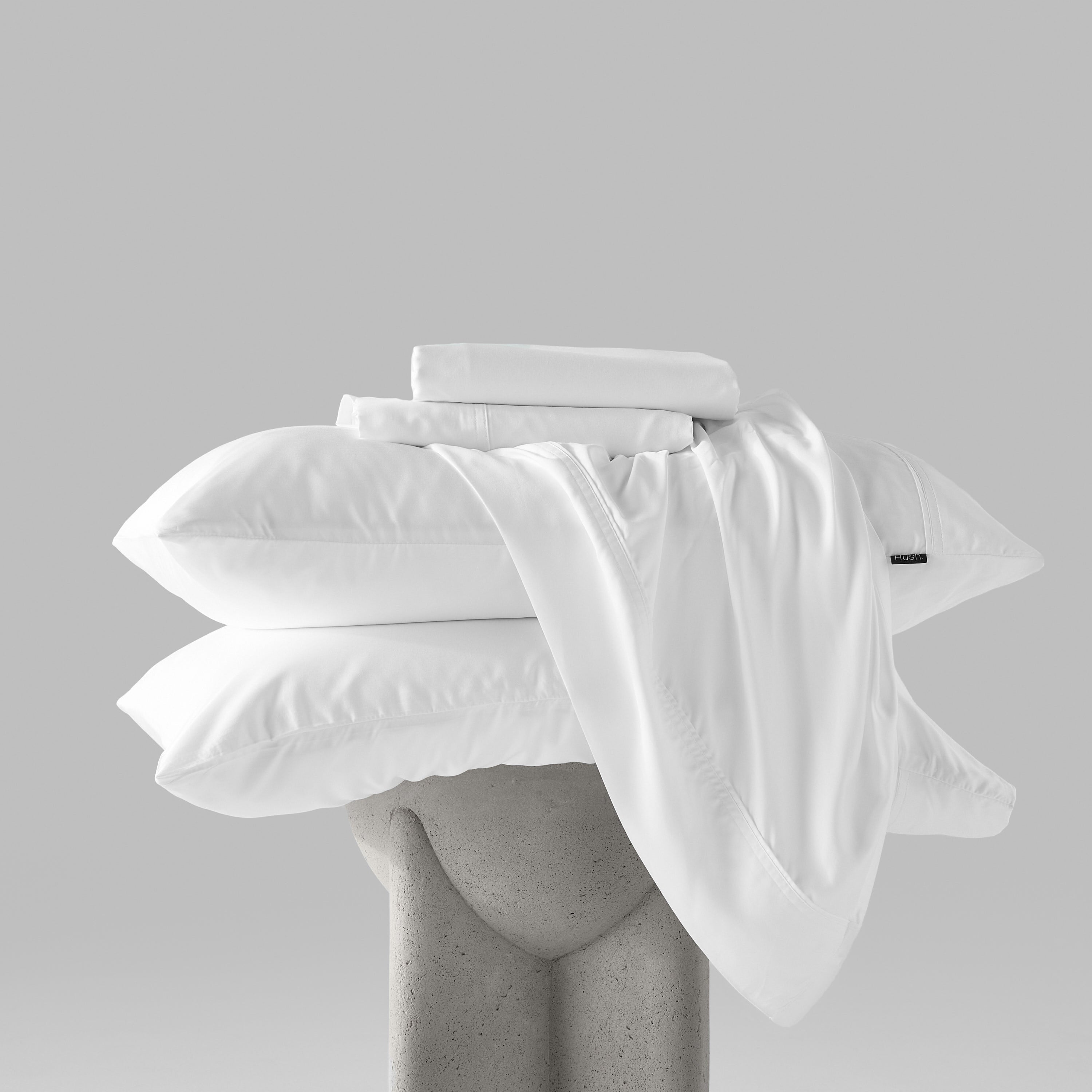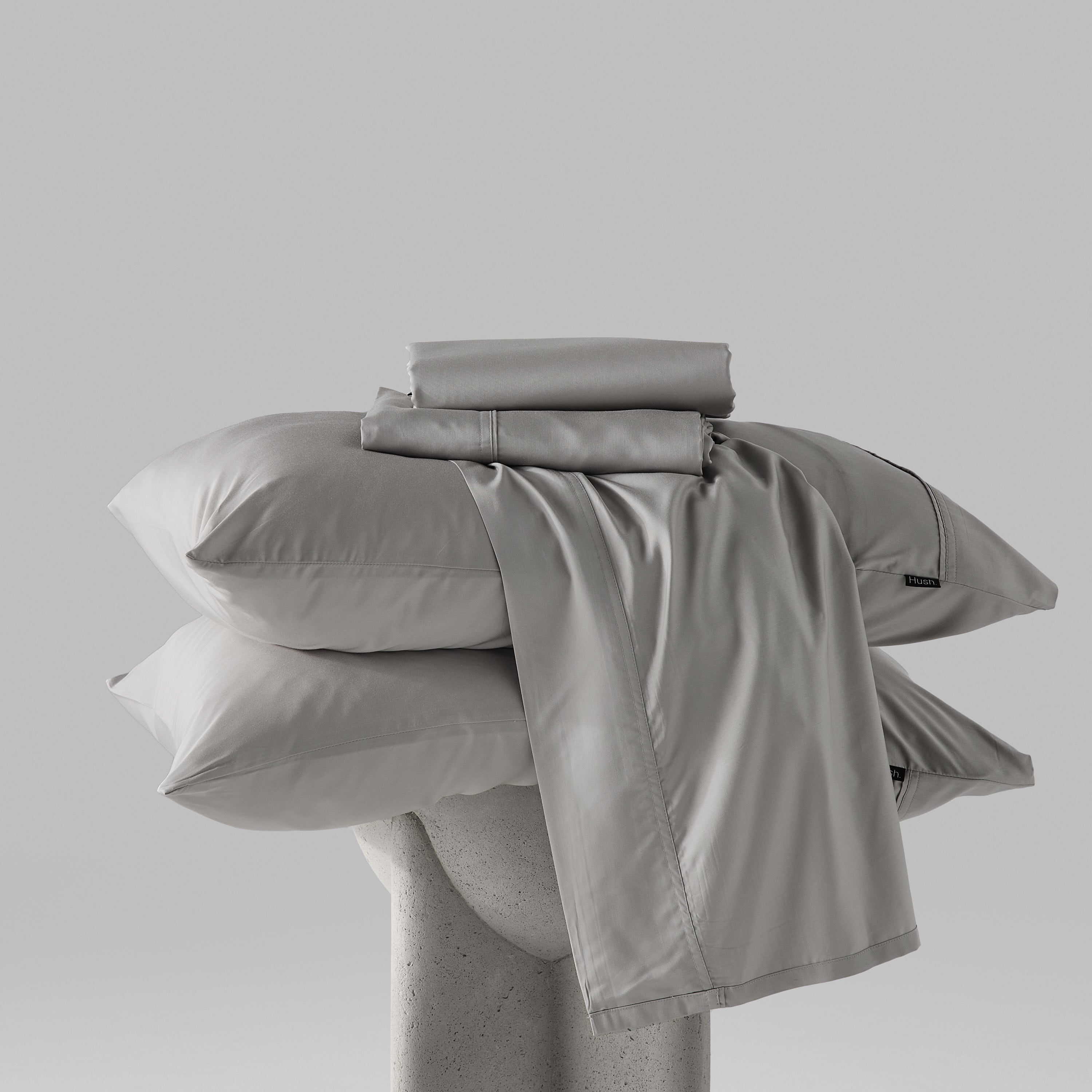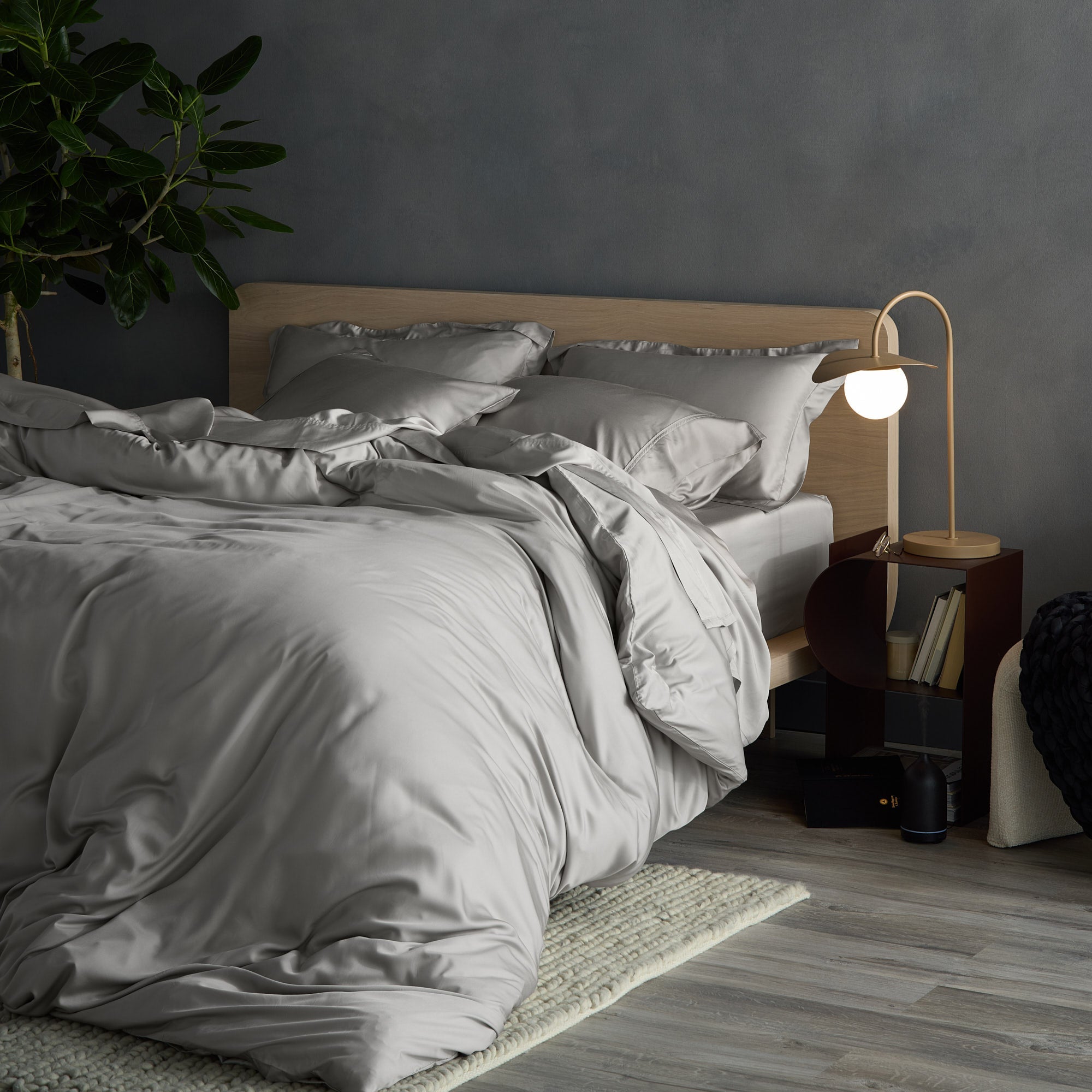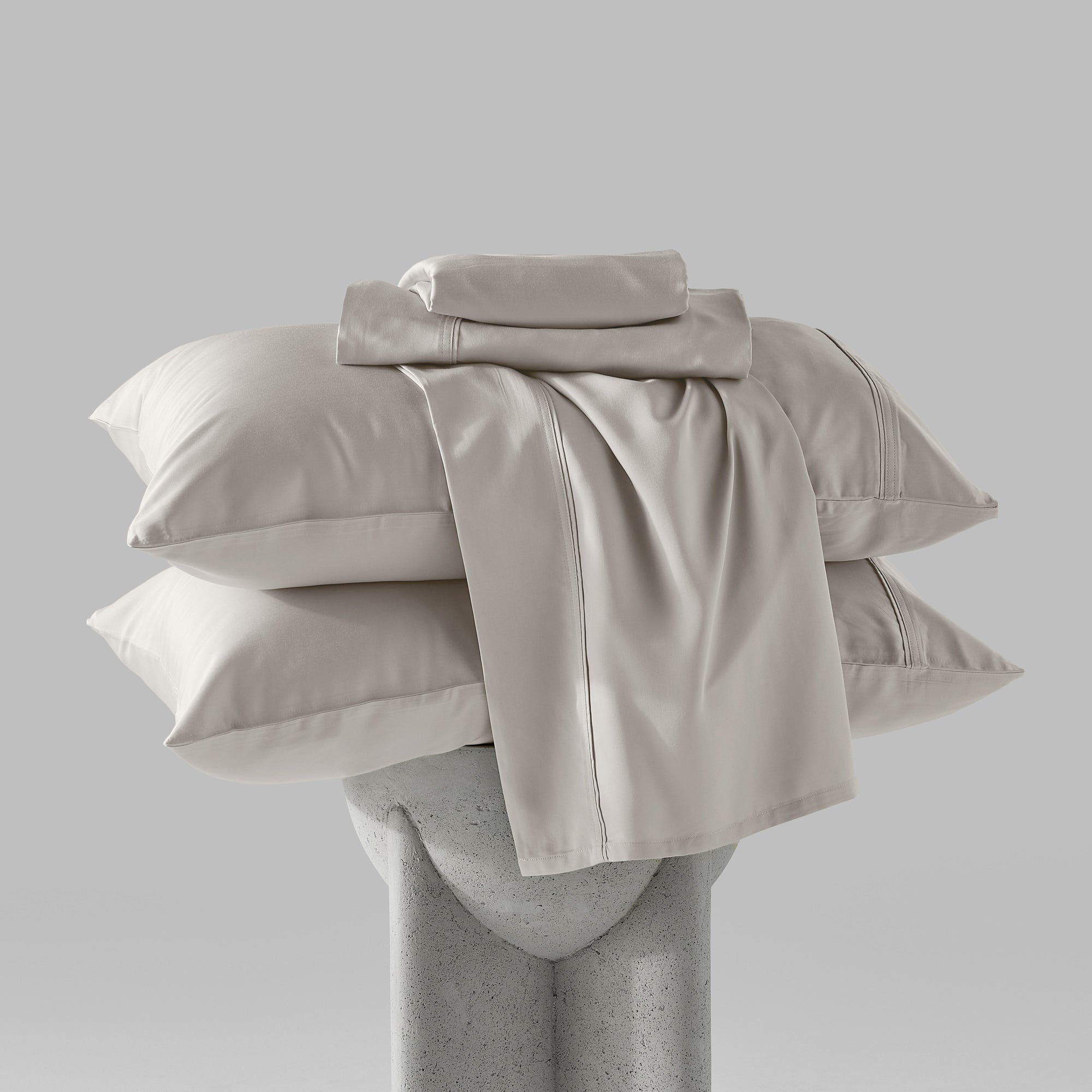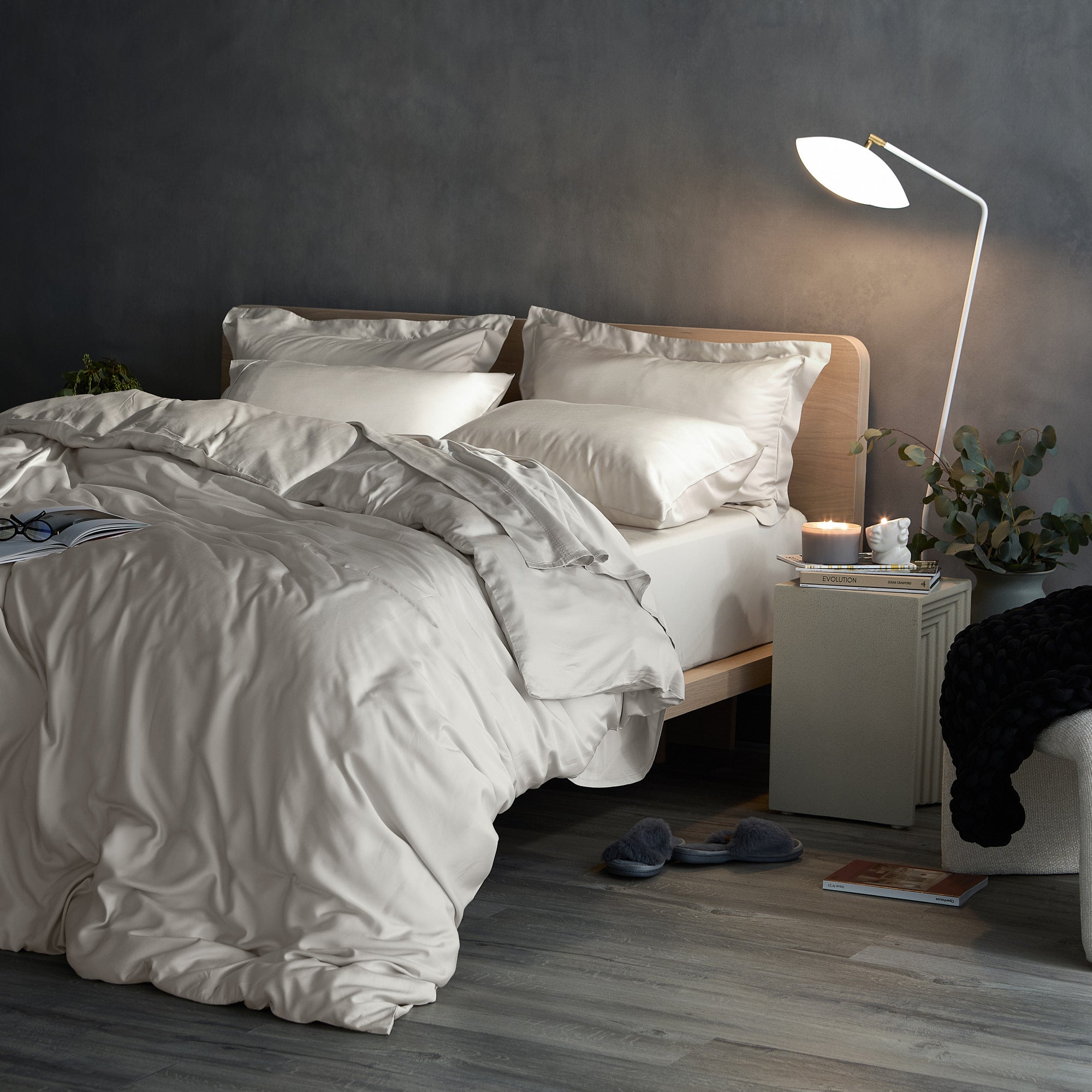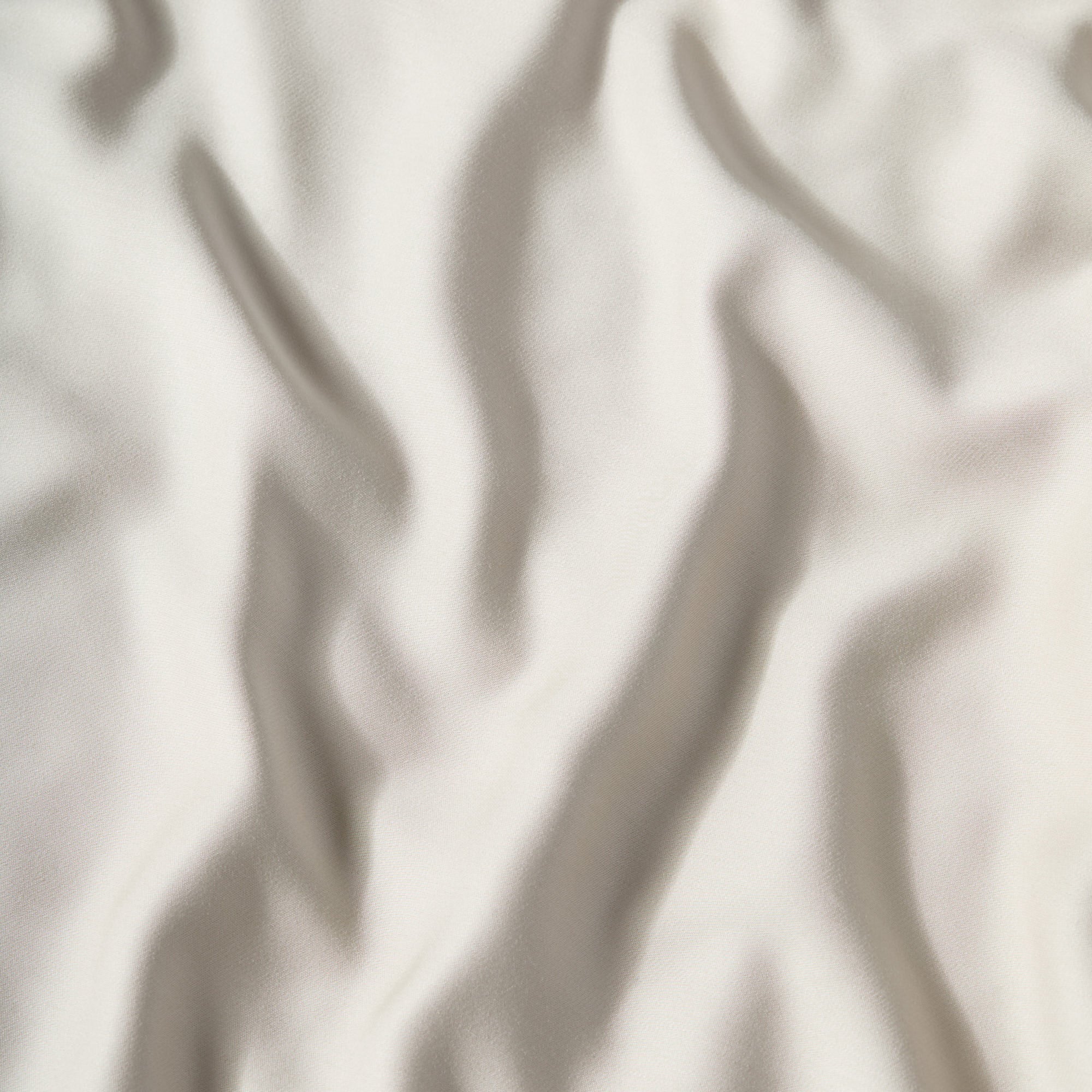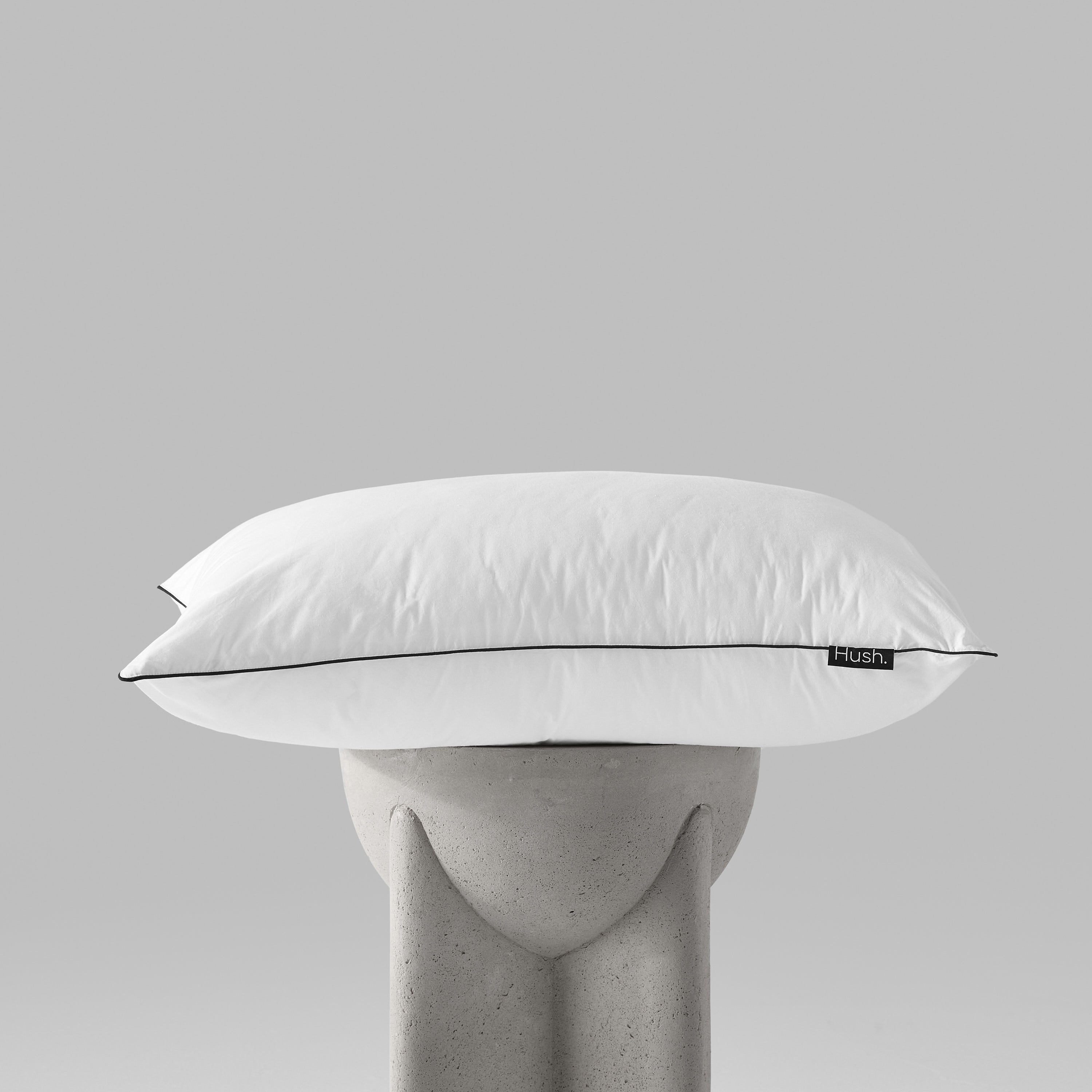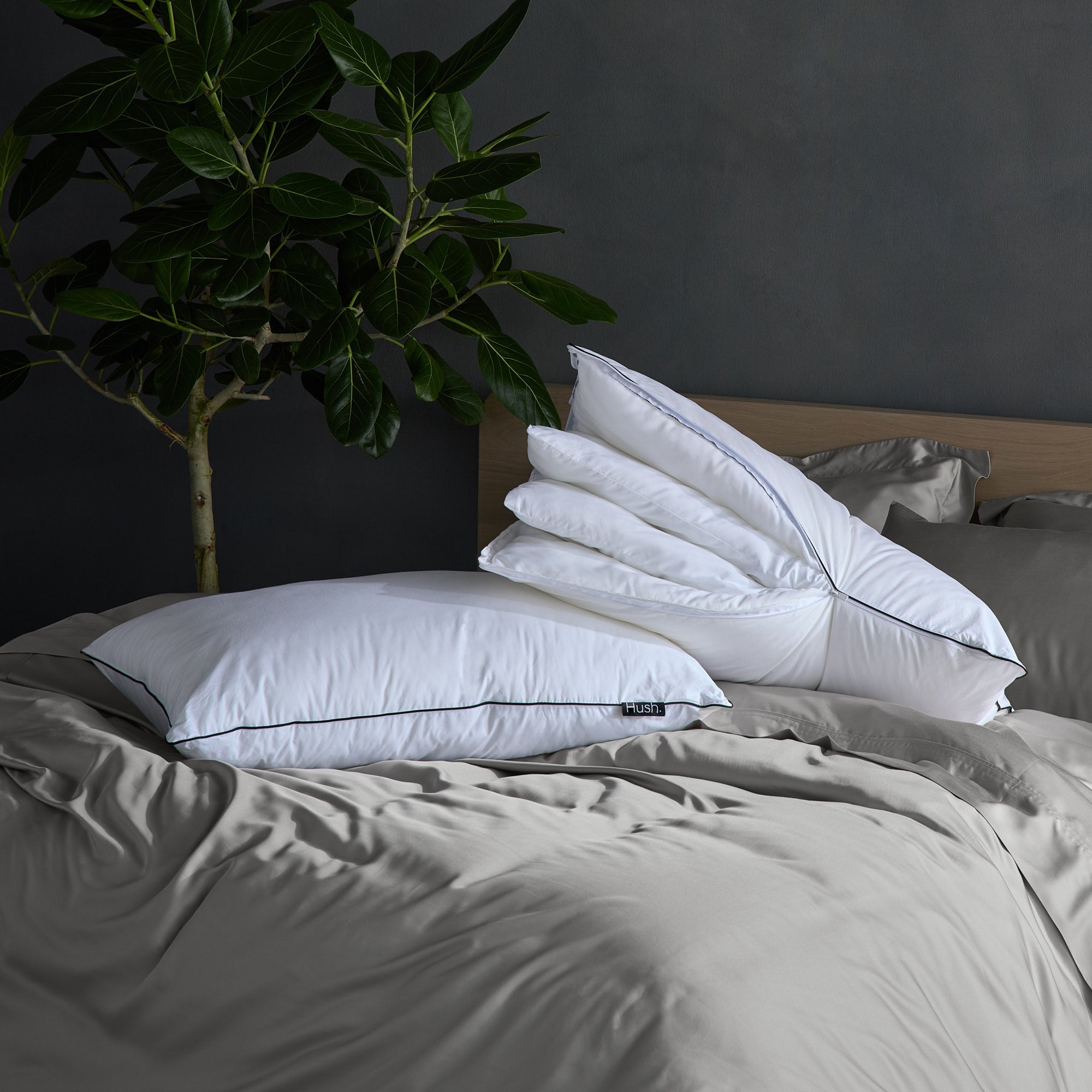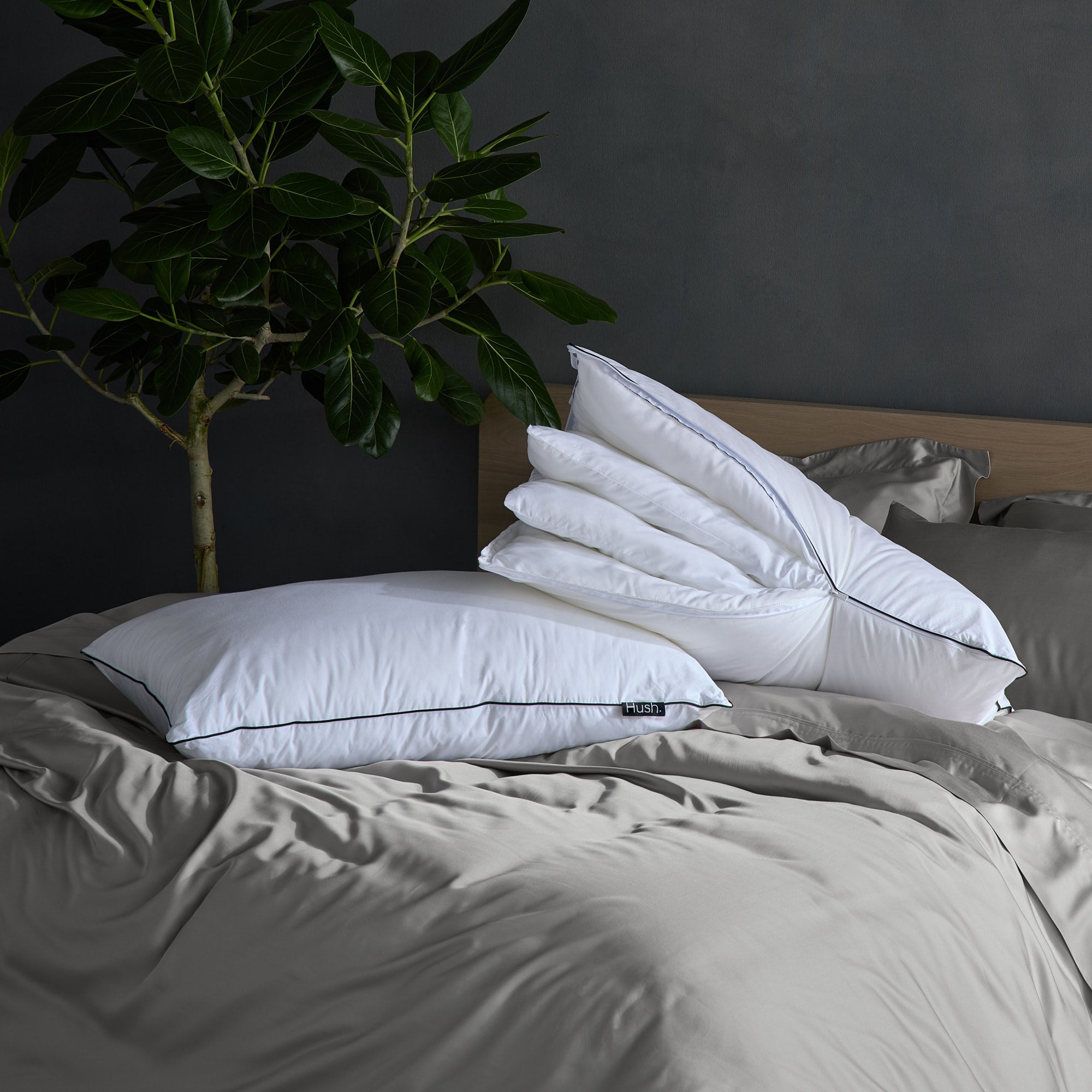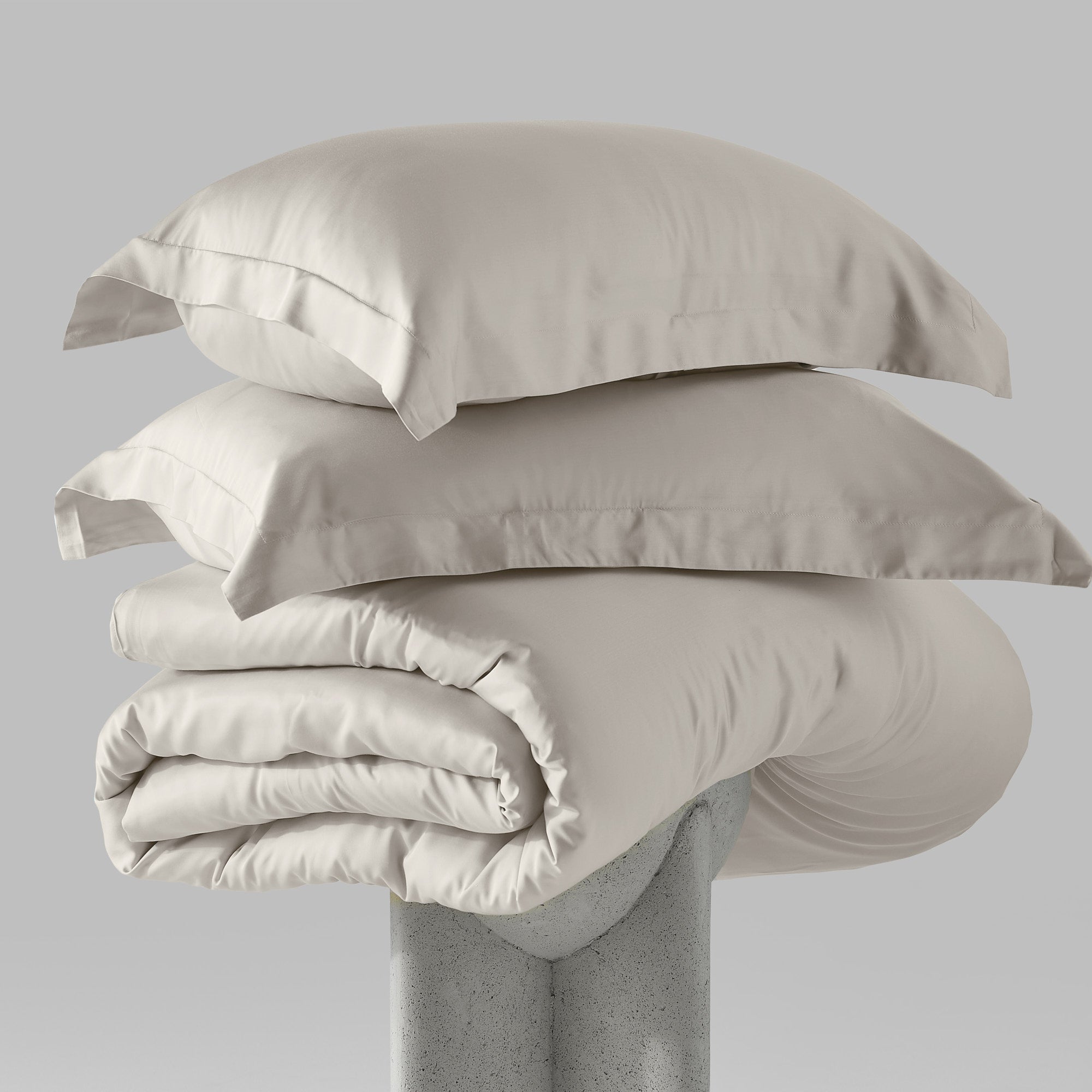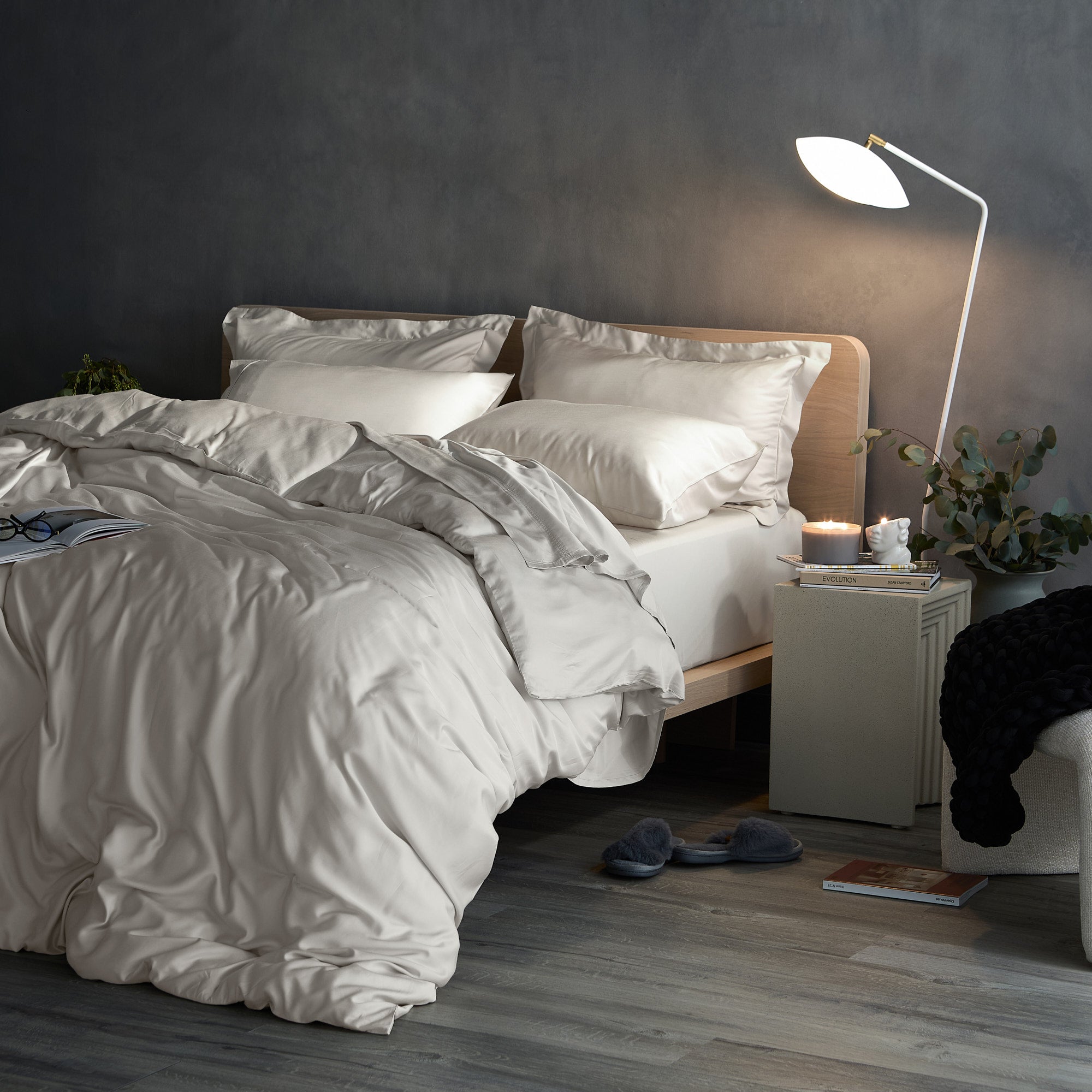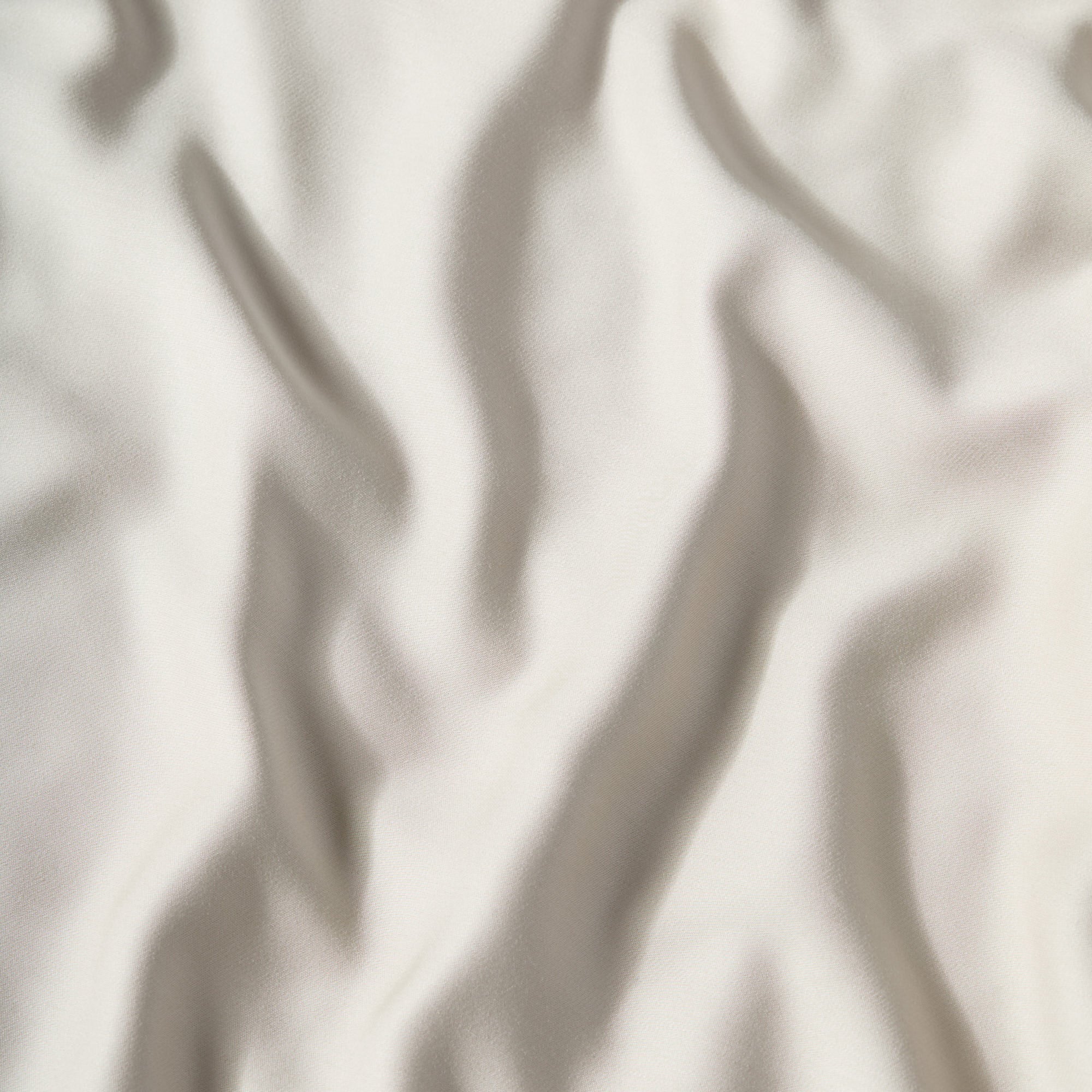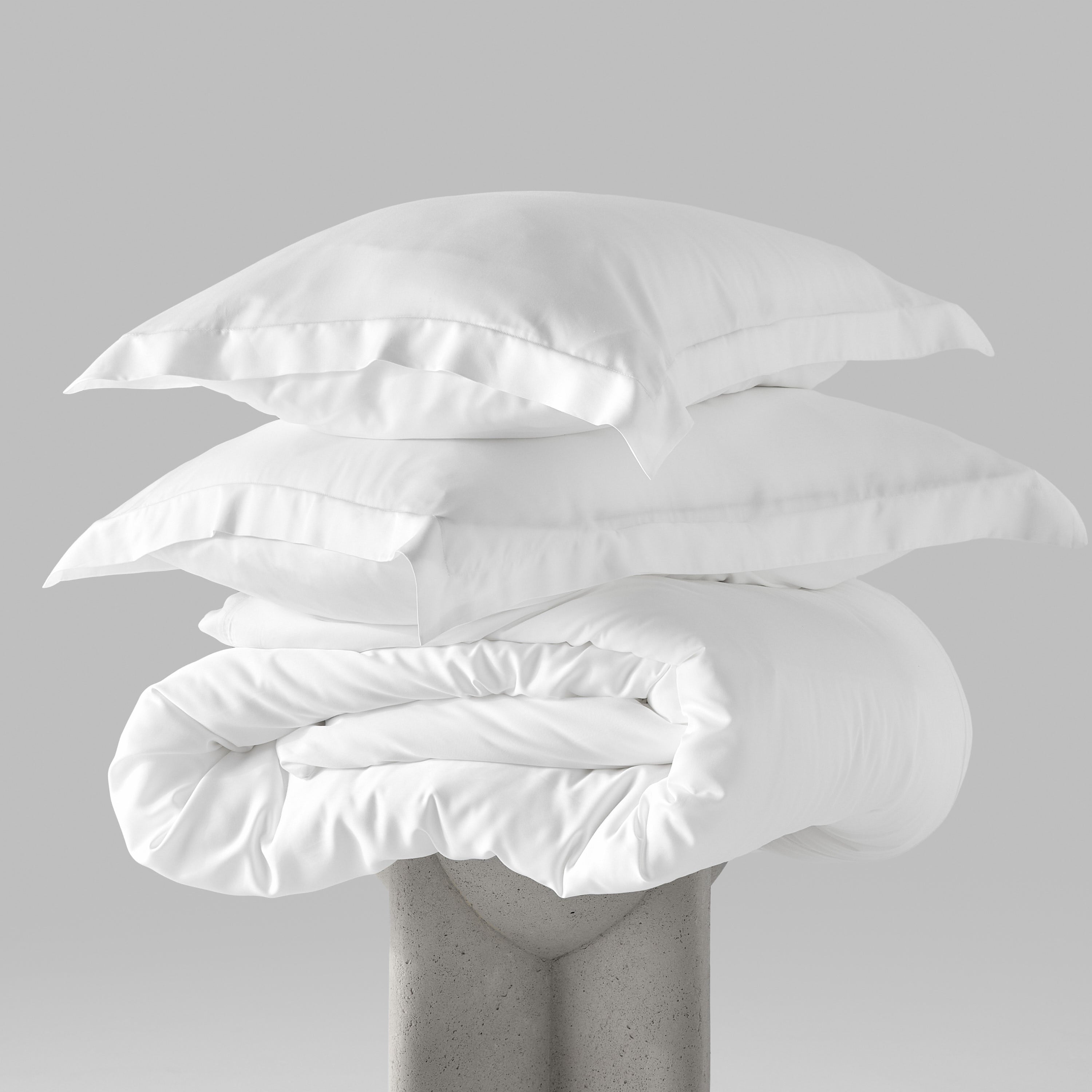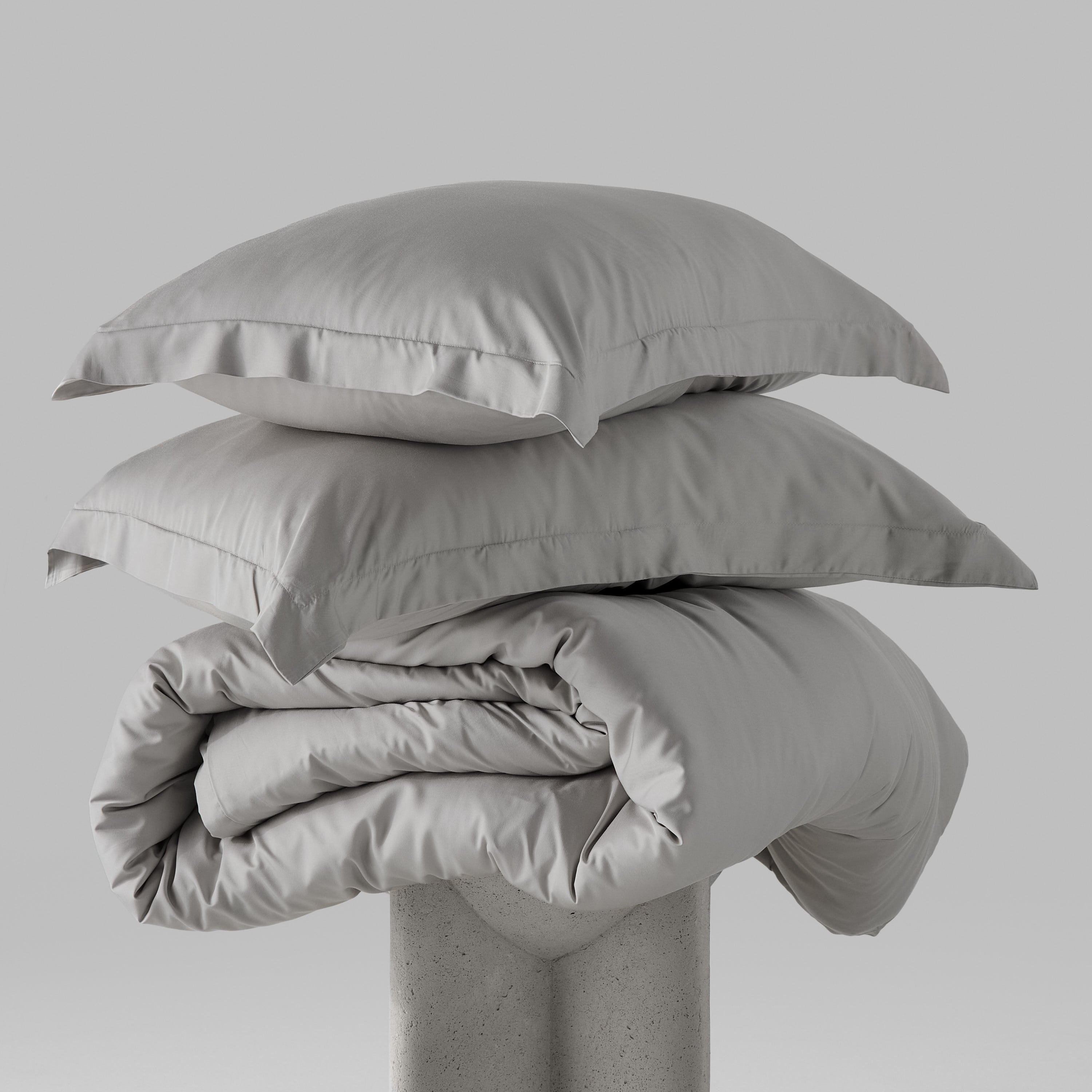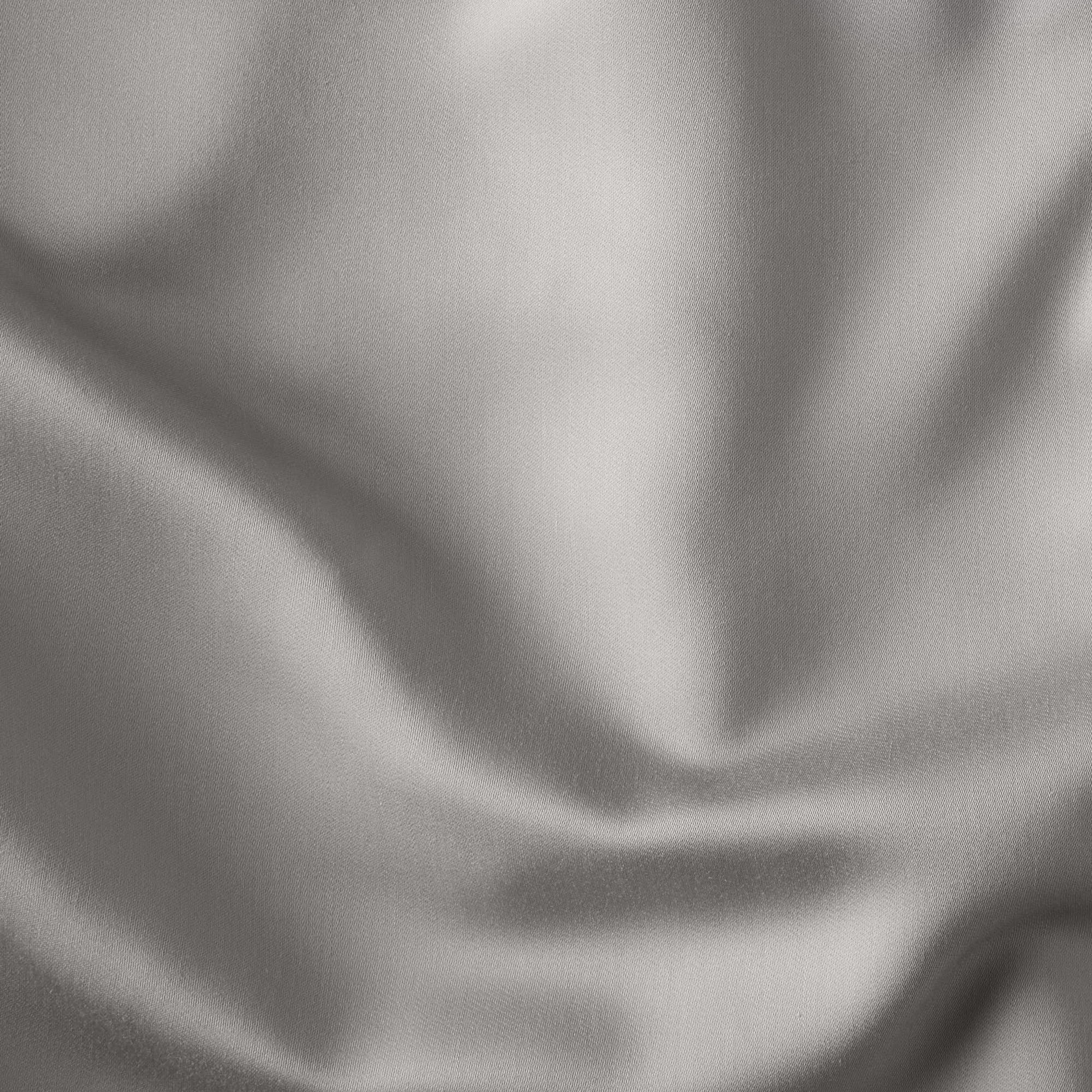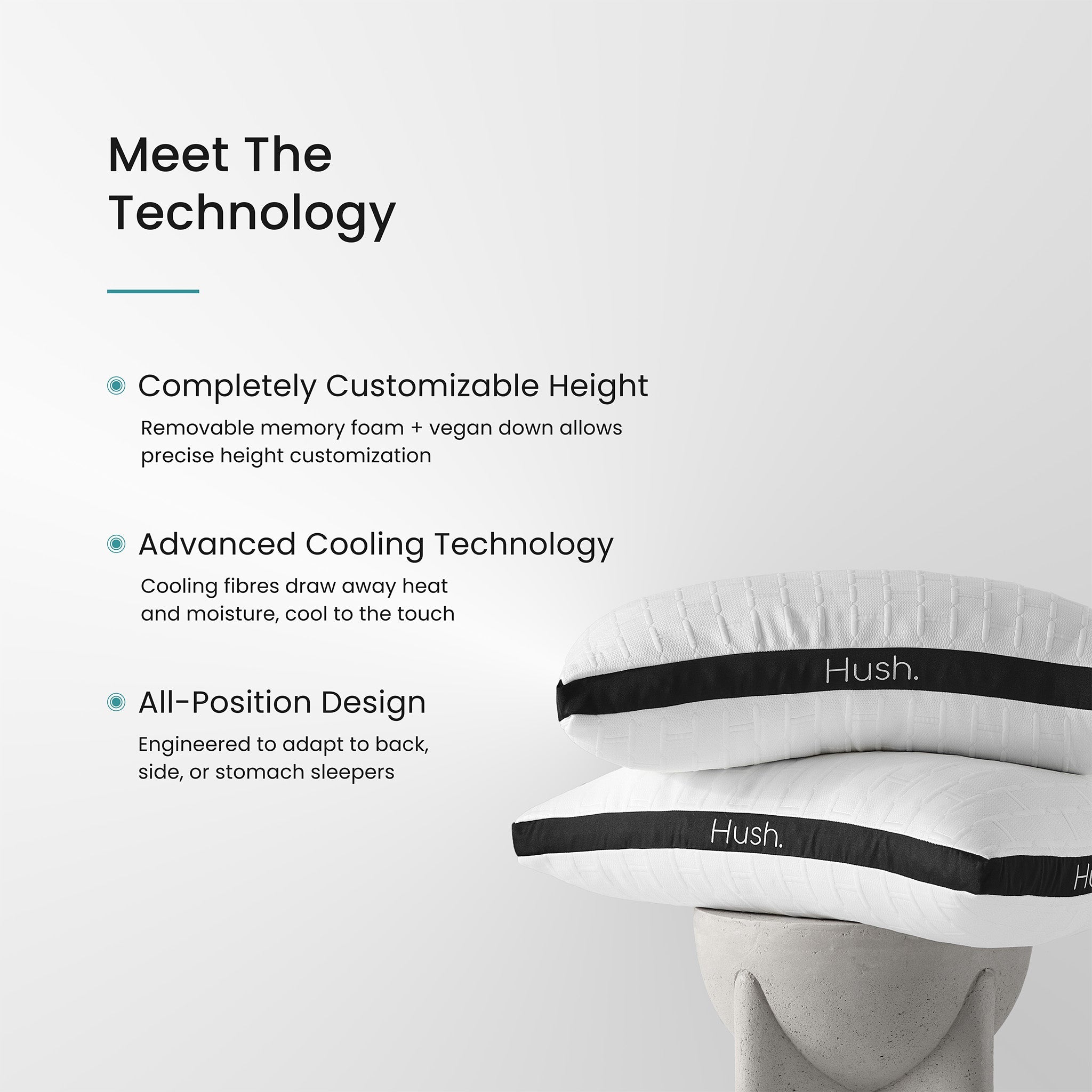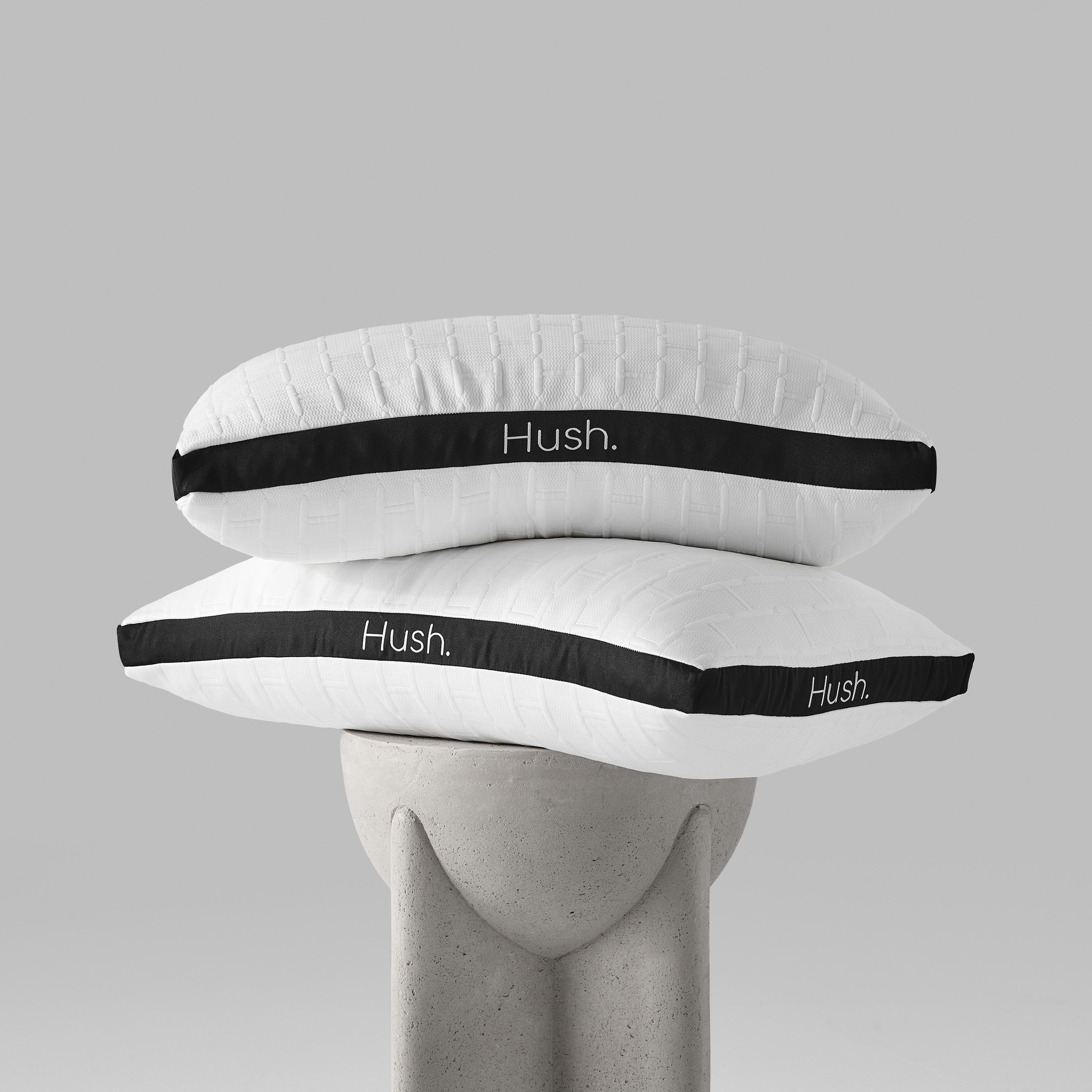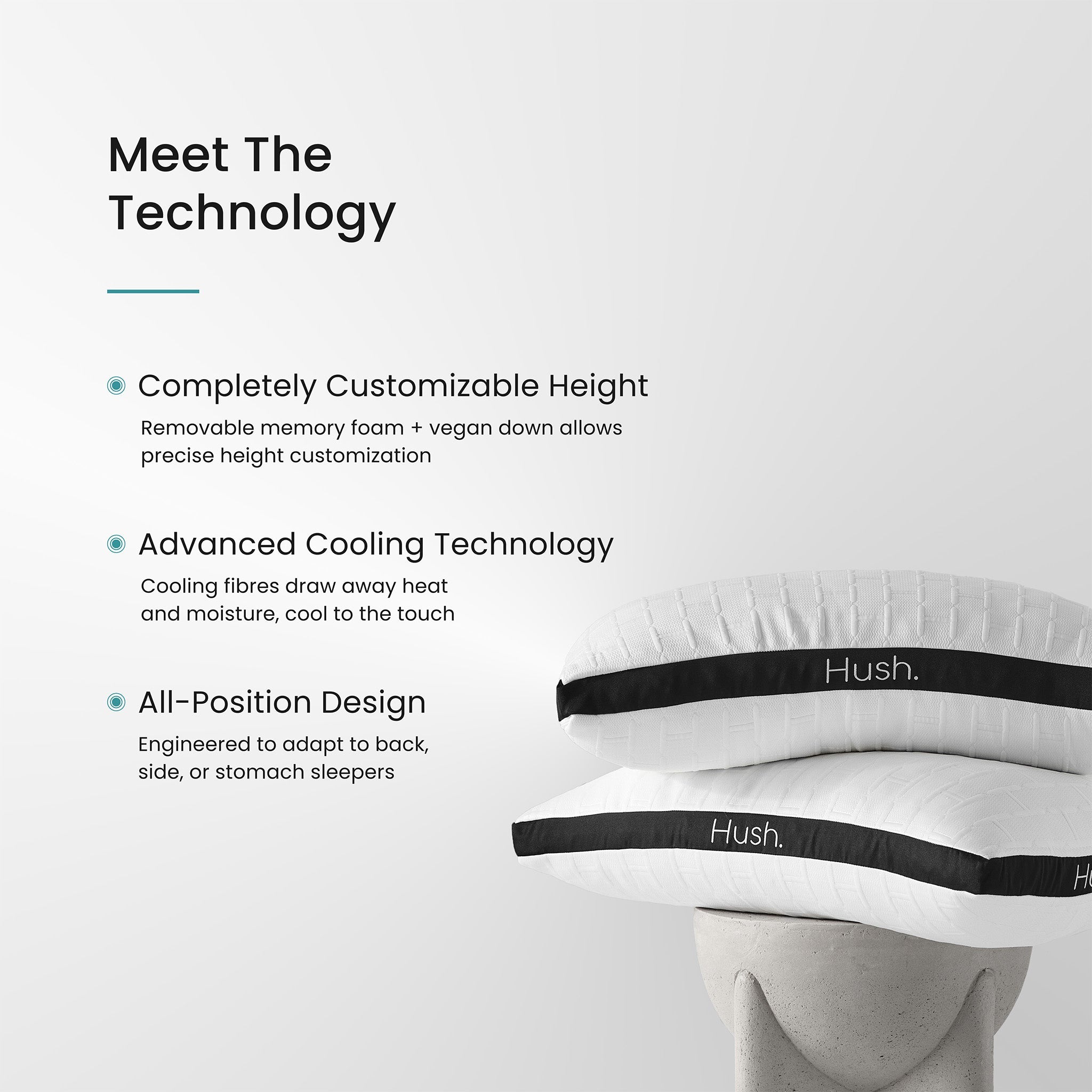
The deep pressure of a weighted blanket is so soothing, it makes sense that you would want a weighted blanket to sleep under every night. And if you use it all the time, it will need regular washings. It’s a good thing we’ve designed the blanket to be super easy to clean. In this article, we’ll tell you how to do just that.
A Hush Blanket is easy to care for. Here is everything you need to know about how to maintain your blanket so it lasts as long as possible.
Disclaimer: These are general guidelines. Please read the care label on your own blanket for washing instructions.
How To Wash a Weighted Blanket: Preparation

When Hush founders Aaron and Lior designed the first Hush Blanket, they knew making it easy to wash had to be a top priority. Hush Weighted Blankets can be tossed in the washing machine, which sets them apart from other weighted blankets.
To prepare your weighted blanket for washing:
- Assess if the weight mechanism detaches from the blanket cover that touches your skin. If this is how your blanket works (like the Hush), take it apart as much as possible.
- Next, look at the care tag on each part of your blanket. The care instructions will help you make sure you keep your blanket staying soft and cozy without harming the fabric or weighted beads. They’ll say whether to use hot water or cool and make sure your blanket isn’t too heavy for your particular machine.
How To Wash a Hush Weighted Blanket
Caring for your weighted blanket is simple — just like we planned.
First, open the zipper on one side. You’ll find it right by the Hush tag. Then, flip the blanket inside out by reaching for the corners and pulling them through. Next, untie all of the ties, and lastly, unzip the cover to detach.
After detached, machine-wash the cover in cold water with a mild or gentle detergent. Tumble dry on low.
Finally, while spot cleaning the weighting mechanism is advised, you can handwash it in cold water with a soft laundry detergent if you need to. Allow the inner weight to air dry flat.
How To Wash Different Weighted Blanket Materials

Weighted blankets can have a variety of different covers, much like a duvet cover. The most popular covers are cotton or linen, while other, unique blankets are made with a fleece or minky fabric. When washing a weighted blanket, it’s important to follow the care instructions for each particular type of cover.
The same is true for inner weights. Hush weights are made with non-toxic glass microbeads. Other blankets may use glass beads or metal, plastic, or poly pellets. The filler usually isn’t made to go in the washing machine because it could damage the machine and the machine could damage the blanket.
If you need to wash the inner weight of your weighted blanket, and it has a fill (not just heavy fabric layers), it may not be washable. Handwashing is your safest option.
Best Cycle for Weighted Blankets Without Removable Covers
Like a great romantic partner, your weighted blanket can give you a firm hug but it’s also gentle. Make sure you treat it as gently as it treats you by using the gentle cycle or delicate cycle, with cold water to extend your fabric’s life as much as possible. If your blanket is too big or heavy for your washer, you can also take it to a laundromat.
It is best practice to handwash your weight. This step can be difficult for one person to do on their own. Try using your tub as the washbasin and press the water through the blanket to clean it. Make sure you rinse out the blanket well to remove any build-up of soap and dirt.
After it’s washed, simply wring out the excess water. Try not to twist the blanket. Instead, roll the blanket to squeeze the water through.
Choosing a Soap
When you’re washing a weighted blanket, you need to consider the type of soap you’re using.
Look for a mild detergent that is designed to be gentle on fabrics. These types of detergents will be labeled with key words like “gentle” or “delicate”. You can find these in both powder and liquid form.
Make sure you’re using the correct amount (about ½ cup per load, overdoing the soap will not make the process faster. It actually makes it that much more difficult to get clean due to the excess detergent you have to wash out.
Another thing to keep in mind is to avoid fabric softeners. Although it may seem like a good idea, it really isn’t recommended. This is because chemicals in fabric softeners are too harsh for the fabric of the blanket, and you could (ironically) end up having a rougher blanket. The same goes for bleach. It is a no-go for your weighted blanket.
Removing Stains
If you’re anything like us, you enjoy your blanket so much, you have it around you at all times — on your bed, the sofa, or when cuddling up with the kids for a movie. Inevitably, it’s going to catch the evidence of your morning coffee, mac ‘n cheese TV dinner, or glass of red wine. This is especially true with a weighted throw — it can only be used as a fort or dragged through the house so many times before it needs to be washed.
Stains are normal and expected, so we’re going to teach you how to make your blanket look clean as new. All it takes is attention and prompt care.
The best thing to do when something spills on your blanket is to not let the stain set. Spot cleaning the stain immediately rather than washing the entire blanket is the way to go. You want to dab — not rub — the stain with cold water. You can even let a piece of ice melt on the stain. Then, using a clean, white cloth, dab the stain to lift off any excess matter you see.
If the stain doesn’t completely lift, use a little detergent or stain remover and repeat the process. You can help work the detergent into the stain by gently scrubbing it with a toothbrush. The key is to work the stain, using as little water as possible. You want to think about pulling the stain up, not wiping it out.
Removing Smells
If your blanket isn’t smelling its best, here’s what you can do to make it seem fresh and new.
Consider using the “deep soak” option on your machine to allow the funk to work its way out. If the fabric of your blanket and cover allows, you could also use an enzymatic soap. The enzymes work to neutralize any odors that have set into the fabric fibers.
But if your blanket is too heavy for your machine or shouldn’t be washed, you can also let the sun and fresh air help. However, don’t hang the weighted part of the blanket on a line or over a rail. If you don’t evenly distribute the weight, you could damage it.
Instead, use a tarp, tablecloth, or any other material as a barrier between the blanket and the ground. Then, let the sun naturally deodorize and freshen mild smells. Don’t forget to flip it, so both sides get the treatment.
If you can’t leave your blanket outside, you can still let the fresh air help. When you can, open your windows and let the fresh air flow over the blanket. You can put boxes under the blanket to lift it off the floor or bed and allow more air to circulate around the edges.
How To Dry a Weighted Blanket

Knowing how to wash a weighted blanket is a great start. But you need to be able to dry it too. Note: We don’t recommend machine drying your Hush Blanket.
If you do use the dryer, make sure you use the lowest heat setting possible. You don’t want to melt the fabric, fibers, or any of the filler. Make sure to place the blanket in the dryer for the shortest length of time possible. Also, make sure your dryer is large enough before you start.
If the blanket won’t fit in your dryer or shouldn’t be machine dried, air drying your blanket will also work. Set aside some extra time for this.
Roll your blanket to gently wring out as much water as you can, then flatten it out to air dry. Just a warning, these blankets are already pretty heavy. Adding water makes it very difficult for one person to carry alone. Ask a friend to help you wring, lift, and move the wet blanket.
Make sure you regularly flip and rotate the blanket. They take a while to dry — usually more than 24 hours. Leaving it on one side for too long can cause the blanket to stay damp for longer.
Before you air-dry your weighted blanket, check the weather. If you live in a humid climate, or you’re expecting rain, wait until the sun is out. Having moisture in the air can cause mold or mildew to set into the blanket - probably not the scent you’re going for.
Note: Do not use a clothesline to dry your blanket. Lay it flat to dry.
Keep Your Weighted Blanket Clean and Fresh

The idea of how to wash a weighted blanket might be daunting. But it doesn’t have to be! A good-quality weighted blanket is designed for easy cleaning and will let you enjoy its benefits for many years. Make sure you separate the sections, follow the specific care instructions, and use a mild detergent in cold water.
Now that you know how easy a weighted blanket can be to maintain, make the jump to invest in your best night’s sleep. Check out Hush weighted blankets. They are designed to be easy to care for and offer an evenly distributed weight to give you a relaxing night of sleep.
